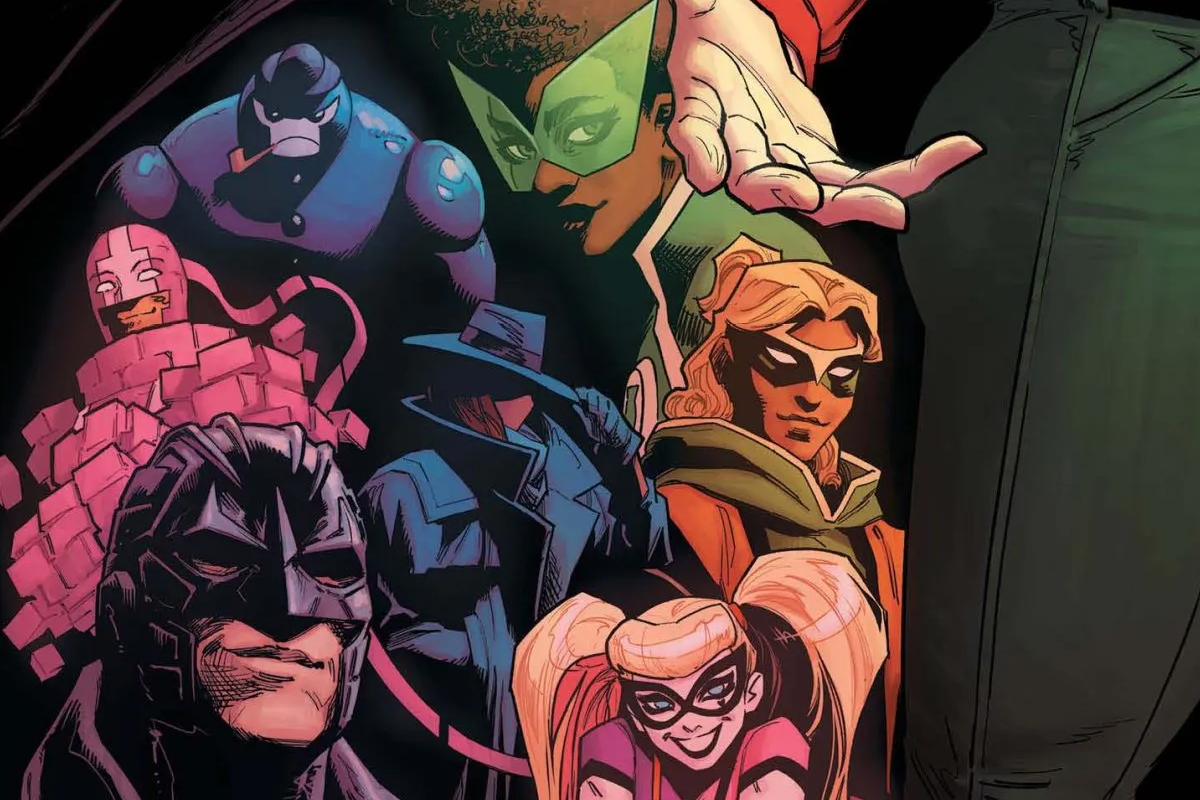[[“value”:”
DC Comics starts Pride month by going above and beyond what the publisher has done in the past with its celebratory anthologies. Previous anthologies were simply a collection of short stories from LGBTQIA creators featuring DC’s queer characters. As enjoyable as those previous anthologies were, DC Pride 2025 does its boldest creator collaboration yet.
DC Pride 2025 begins with Green Lantern/Alan Scott visiting an old hangout for the LGBTQIA community with a trans man named Ethan Rivera. In showing Ethan the spot in which he and Johnny Ladd (actually Red Lantern/Vladimir Sokov) carved out a heart on a wall in 1936, this sparks a cosmic (perhaps magical) reaction. More specifically, because the wall is infused with both Starheart and Crimson flame energy, it creates alternate realities for many of the DCU’s queer heroes and villains. But like everything else that happens in the DCU, not everything is what it seems.
DC Comics
Through the collaborations of Vita Ayala, Tim Sheridan, Josh Trujillo, Maya Houston, Don Aguillo, Alex Moore, Vincent Cecil, and many, many more creators, each short story is actually a smaller piece of a much larger narrative. More specifically, each creator focuses on one or two queer characters from the DC Universe to cover the wide spectrum of LGBTQIA experiences. This is where the alternate realities play a significant role: each world explores the hopes and fears of each hero and villain.
For instance, Sojourner “Jo” Mullein’s world explores her desire to be loved and accepted despite having originally chosen solitude. Alan Scott’s world explores his desire to retire from superheroics to have the life he was robbed with Johnny Ladd before he learned he was the Red Lantern. His story also explores how important it is to accept that some relationships aren’t meant to be and the importance of coming to terms with loss. Even the Red Lantern (or rather, the Crimson Flame) explores the dangerous ways in which queer people can maladapt when faced with challenges. The Blue Snowman in particular explores those maladaptive ways of seeking acceptance.
What really stands out about the individual stories is how they accurately capture the complex emotions that accompany LGBTQIA experiences, including intersectionality. One recurring thread in all of the stories is the need for acceptance, but also fearing the consequences of living authentically in a world that is still hostile towards the LGBTQIA community. This goes double (even triple) for anyone who is a member of more than one marginalized group, such as being a trans Latine (like in the case of Ethan Rivera), or being a Black lesbian.
DC Comics
Related to those issues is experiencing anger and frustration with a world that insists on neatly categorizing people into strict binaries, while violently erasing the larger spectrum of sexual and gender identities, especially with legislature. This is more deeply explored in the Blue Snowman story, but the one story that cuts more deeply into what this feels like is the non-fiction autobiographical story from Jenny Blake.
Most comic book fans are already familiar with Blake’s work as Tony Isabella, since she created iconic characters such as Black Lightning and Misty Knight – both of whom have been adapted for television. Blake’s long journey to transitioning and living as her authentic self is a universally shared experience among many people who identify as trans, non-binary, and gender-fluid.
What really hits home with Blake’s autobiographical account is the internalization of transphobia and the societal pressure to conform to your assigned sex at birth, and spending your life believing there is something wrong with you. There’s also the very real experience of feeling you can only wear the clothes you feel more comfortable in from the safety and comfort of your own home, while hiding in plain sight in public.
DC Comics
But in addition to Blake’s painful account of living in a world that doesn’t accept trans people, she also spotlights the importance of community and having a healthy support system. It is often through our most important relationships that many trans and LGBTQIA people finally find self-acceptance and the confidence to live life openly and authentically.
The last thing that makes DC Pride 2025 a must-read is the fan accounts at the end of the comic that spotlight how superhero comics helped them over the course of the lives. All in all, DC Comics really out did itself with DC Pride 2025. While the previous anthologies have been a joy to read every year, this year’s complication set the bar even higher.
“]] From acclaimed creators like Vita Ayala, Tim Sheridan, and Jenny Blake (aka Tony Isabella) comes DC’s best collection of LGBTQIA stories. Read More

